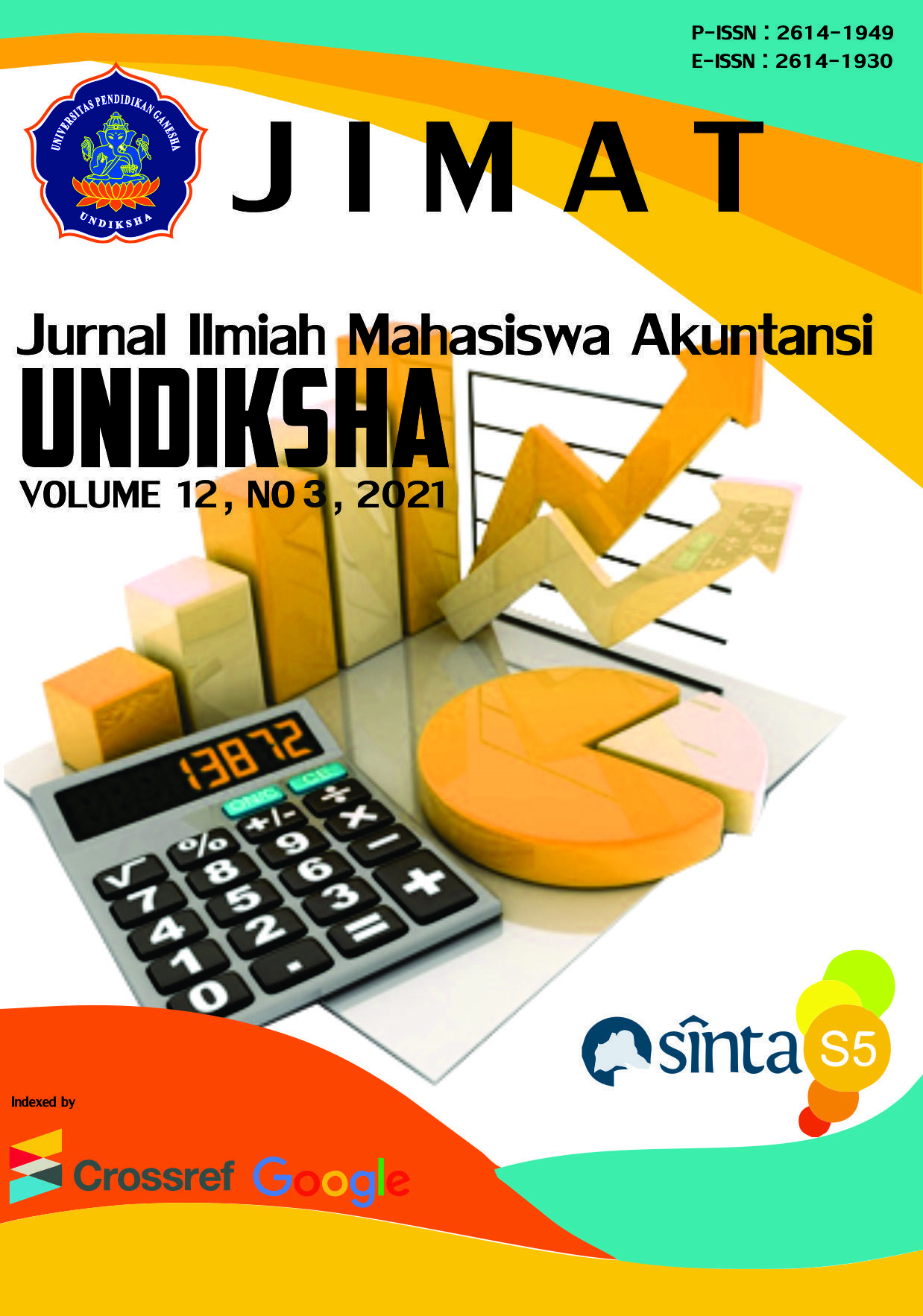Dampak Pengembangan Obyek Wisata Kayu Putih Terhadap Keuangan Dan Aktivitas Ekonomi Masyarakat Di Banjar Bayan
DOI:
https://doi.org/10.23887/jimat.v12i3.40699Keywords:
Economic Impact, Ecotourism, Finance, Community EconomyAbstract
Tourism is one sector that has an impact on the economy. The island of Bali, which is famous for its culture and natural beauty, has a variety of tourist attractions. One of the unique tourist attractions in Bali is the existence of a giant wooden tree that grows firmly in the Bayan Traditional Village area. The tree which the local community calls the eucalyptus tree is estimated to be hundreds of years old, growing behind a sacred place called Pura Babakan. The idea to develop this tree as a tourist attraction began in 2013 and began to be visited by tourists. Tourist arrivals certainly affect the economic activities of local residents. This study examines the economic impact of the community as a result of the development of eucalyptus tourism objects. Interviews and observations were conducted to collect primary data. The qualitative approach was carried out through structured interviews with informants. The condition of community settlements, the type of residential building is permanent with tiled floors and walls. The ownership status of the house is self-owned, built on land inherited by the family. All houses have electricity. Most people use gas stoves for cooking. Ownership of valuables such as cars, motorcycles, gold, refrigerators, televisions, cellphones, and computers, the acquisition is not related to the impact of tourism objects, but because of necessity. In general, the development of eucalyptus tourism objects has not had much effect on the economy of the Bayan Traditional Village community. This tourist attraction is only a giant tree with limited supporting facilities. In the future, there are still many potential villages that must be explored as a means of supporting and adding to the comfort of visitors.
References
Aryunda, H. (2011). Dampak Ekonomi Pengembangan Kawasan Ekowisata Kepulauan Seribu. Jurnal Perencanaan Wilayah dan Kota, 22(1), 1-16.
Agung, A.A.G. (2021). Pohon Kayu Putih Raksasa Daya Tarik Desa Tua. https://www.gatra.com
Bali.bps.go.id. (2020). Perkembangan Pariwisata Provinsi Bali Mei 2020. https://bali.bps.go.id.
Bps.go.id. (2019). Jumlah Kunjungan Wisatawan Mancanegara Per-Bulan ke Indonesia Menurut Pintu Masuk 2017-2019. https:// www.bps.go.id.
Bestari, I Putu Prasista, I. G.A. Oka Suryawardani, Agung Suryawan Wiranatha. (2020). Respons terhadap Otentisitas: Tanggapan Wisatawan Asing terhadap Unsur-unsur Budaya dalam Tiga Hotel Internasional di Bali, Jurnal Kajian Bali, Vol. 10, No. 01, pp 139-162
Dhalyana, D., & Adiwibowo, S. (2013). Pengaruh Taman Wisata Alam Pangandaran Terhadap Kondisi Sosial Ekonomi Masyarakat. Sodality: Jurnal Sosiologi Pedesaan, 1(3), 182-199.
Hijriati, E., & Mardiana, R. (2014). Pengaruh Ekowisata Berbasis Masyarakat Terhadap Perubahan Kondisi Ekologi, Sosial Dan Ekonomi Di Kampung Batusuhunan, Sukabumi. Sodality: Jurnal Sosiologi Pedesaan, 146-159.
Peraturan Menteri Dalam Negeri Nomor 33 Tahun 2009 tentang Pedoman Pengembangan Ekowisata di Daerah.
Purwana, B. H. S. (2018). Potensi Ekowisata Berbasis Budaya Masyarakat Di Desa Sanaru, Kabupaten Lombok Utara. Jurnal Kebudayaan, 13(2) 91-105.
Pynanjung, P.A., & Rianti, R. (2018). Dampak Pengembangan Ekowisata Terhadap Kesejahteraan Masyarakat Di Kabupaten Bengkayang: Studi Kasus Kawasan Ekowisata Riam Pangar. Jurnal Nasional Pariwisata, 10(1), 22-38.
Mahendra, M. R. & Atmadja, A. T. (2017). Analisis Akuntabilitas Pengelolaan Dana Sesari Pada Pura Kahyangan Jagat Ponjok Batu Provinsi Bali. e-Jurnal S1 Ak Universitas Pendidikan Ganesha, 8(2).
Nusabali. (2021). Pengelola Obyek Wisata Kayu Putih Rancang Toko Souvenir. https://www.nusabali.com.
Saputra, K. A. K., Anggiriawan, P. B., Trisnadewi, A. A. E., Kawisana, P. G. W. P., & Ekajayanti, L. S. (2019). Pengelolaan Pendapatan Asli Desa Sebagai Landasan Pembangunan Ekonomi Pedesaan. Ekuitas: Jurnal Pendidikan Ekonomi, 7(1), 5-13.
Saputra, K. A. K., Sara, I. M., Jayawarsa, A. K., & Pratama, I. G. S. (2019). Management of Village Original Income in The Perspective of Rural Economic Development. International Journal of Advances in Social and Economics, 1(2), 52-59.
Singarimbun M dan S Effendi. 1989. Metode Penelitian Survai. Jakarta (ID): LP3ES.
Suarka, Fany Maharani. 2010. Strategi pengembangan Ekowisata Di Desa Jehem Kecamatan Tembuku Kabupaten Bangli. Tesis. Universitas Udayana. Denpasar
Tafalas, Muhiddin. (2010). Dampak Pengembangan Ekowisata terhadap Kehidupan Sosial dan Ekonomi Masyarakat lokal studi kasus ekowisata bahari Pulau Mansuar Kabupaten Raja Ampat (tesis). Bogor: Institut Pertanian Bogor.
Tungga, A., Wikrama, A., Saputra, K. A. K., & Vijaya, D. P. (2014). Metodologi Penelitian Bisnis. Cetakan Ke-1. Yogyakarta: Penerbit Graha Ilmu.


